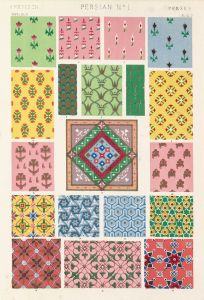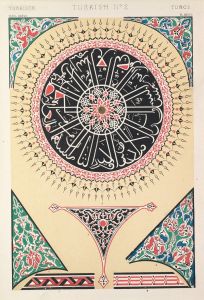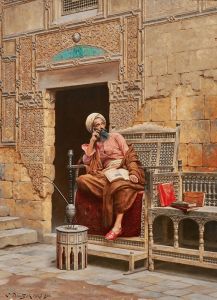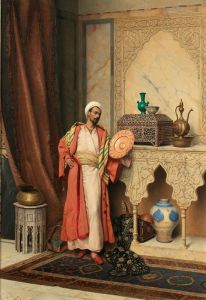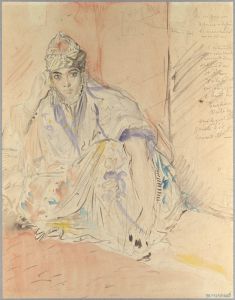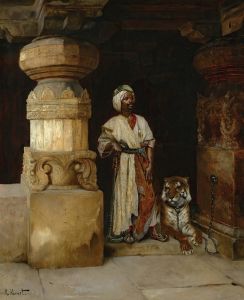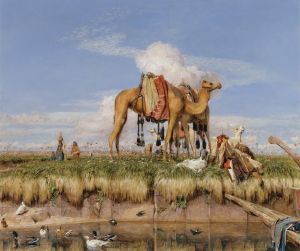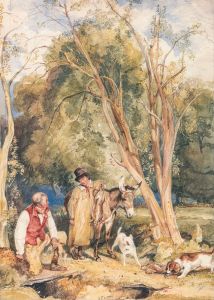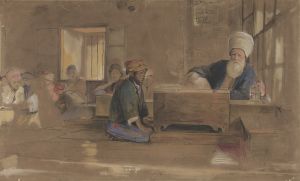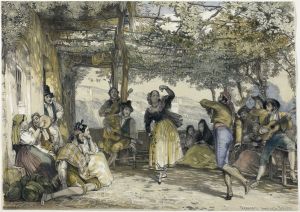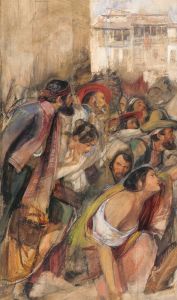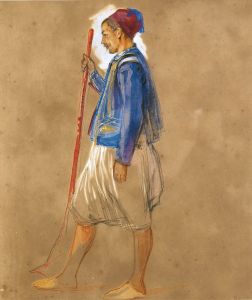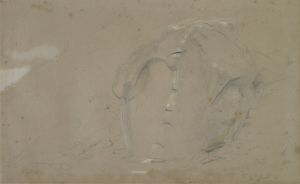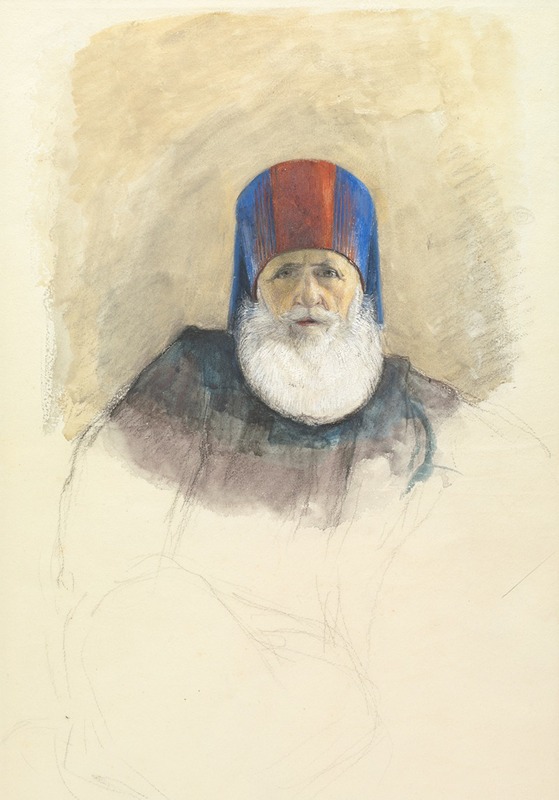
Study for Mehmet Ali Pasha
A hand-painted replica of John Frederick Lewis’s masterpiece Study for Mehmet Ali Pasha, meticulously crafted by professional artists to capture the true essence of the original. Each piece is created with museum-quality canvas and rare mineral pigments, carefully painted by experienced artists with delicate brushstrokes and rich, layered colors to perfectly recreate the texture of the original artwork. Unlike machine-printed reproductions, this hand-painted version brings the painting to life, infused with the artist’s emotions and skill in every stroke. Whether for personal collection or home decoration, it instantly elevates the artistic atmosphere of any space.
"Study for Mehmet Ali Pasha" is a watercolor painting created by the British artist John Frederick Lewis. Lewis, born in 1804 and passing away in 1876, was renowned for his detailed and vibrant depictions of Orientalist subjects, a genre that romanticized and often stereotyped the cultures of the Middle East, North Africa, and Asia. His works are celebrated for their meticulous attention to detail and vivid use of color, which brought to life the scenes and figures he encountered during his travels.
The painting "Study for Mehmet Ali Pasha" is a preparatory work that showcases Lewis's skill in capturing the likeness and character of his subjects. Mehmet Ali Pasha, also known as Muhammad Ali of Egypt, was an Ottoman Albanian commander who rose to prominence in the early 19th century. He is often regarded as the founder of modern Egypt due to his significant military, economic, and cultural reforms.
In this study, Lewis focuses on the figure of Mehmet Ali Pasha, presenting him in traditional attire that reflects his status and cultural background. The watercolor medium allows for a delicate rendering of textures and fabrics, highlighting Lewis's expertise in capturing the subtleties of light and shadow. The painting likely served as a preliminary sketch for a more finished work, providing insights into Lewis's artistic process and his approach to portraiture.
John Frederick Lewis spent a significant portion of his career in the Middle East, particularly in Egypt, where he lived from 1841 to 1851. His time in Cairo deeply influenced his artistic output, as he immersed himself in the local culture and environment. This immersion is evident in the authenticity and richness of his depictions, which stand out among his contemporaries for their depth and accuracy.
"Study for Mehmet Ali Pasha" is part of Lewis's broader body of work that explores the people and landscapes of the Middle East. His paintings often feature intricate architectural details, lush interiors, and vibrant street scenes, all rendered with a keen eye for authenticity. Lewis's work was well-received during his lifetime, earning him a reputation as one of the foremost Orientalist painters of his era.
Today, John Frederick Lewis's paintings are held in high regard and can be found in major art collections and museums around the world. His contributions to the Orientalist genre continue to be studied and appreciated for their artistic merit and historical significance. "Study for Mehmet Ali Pasha" remains a testament to Lewis's talent and his ability to capture the essence of his subjects with precision and sensitivity.





